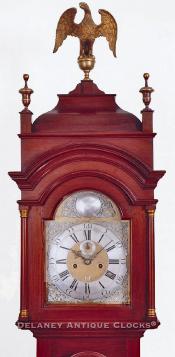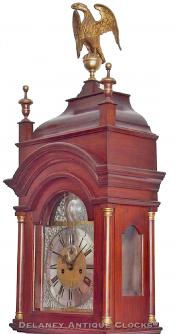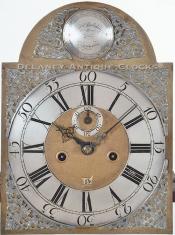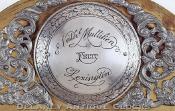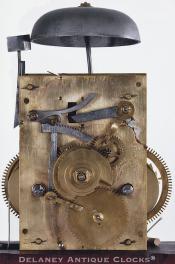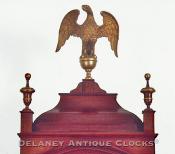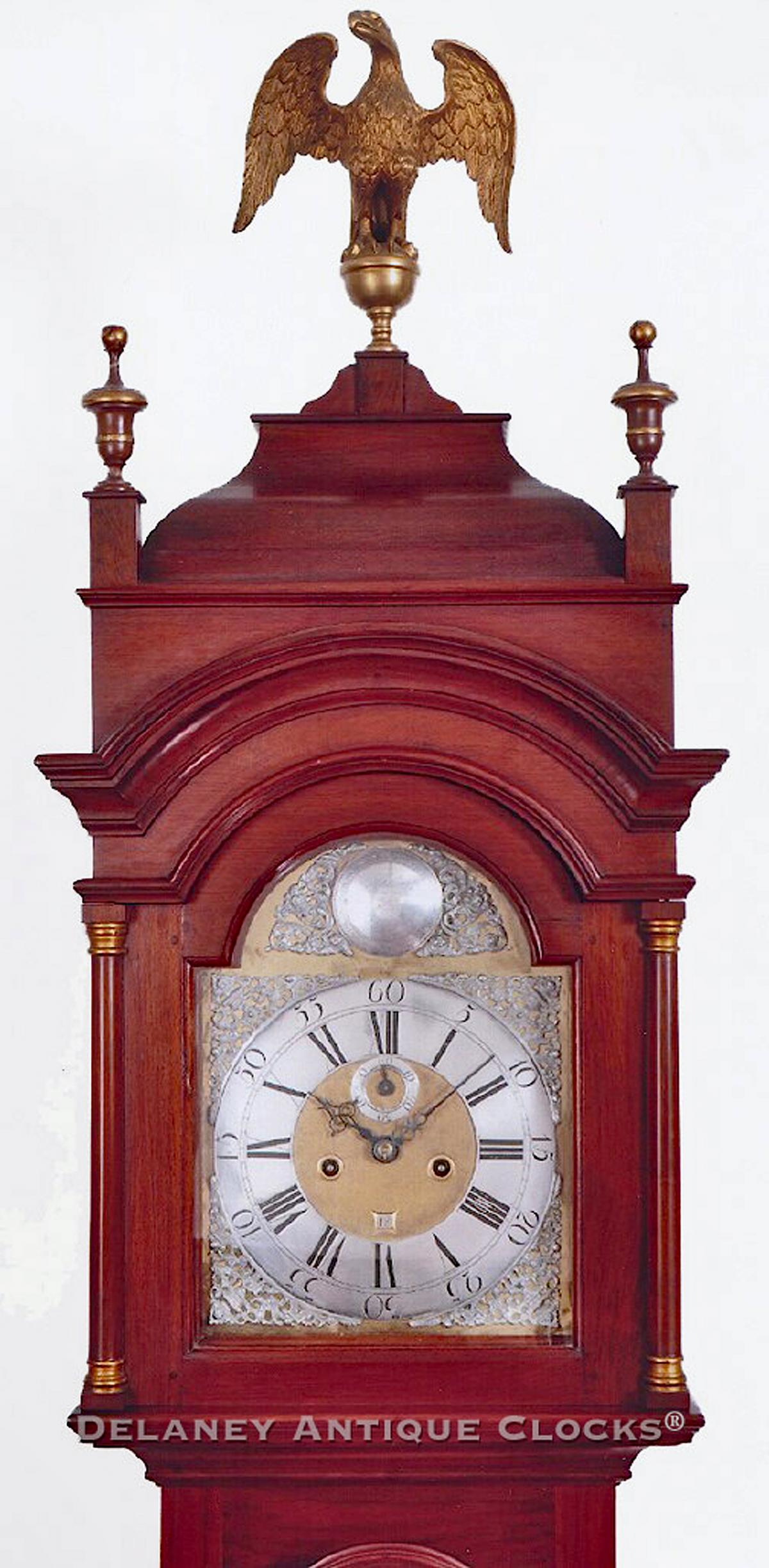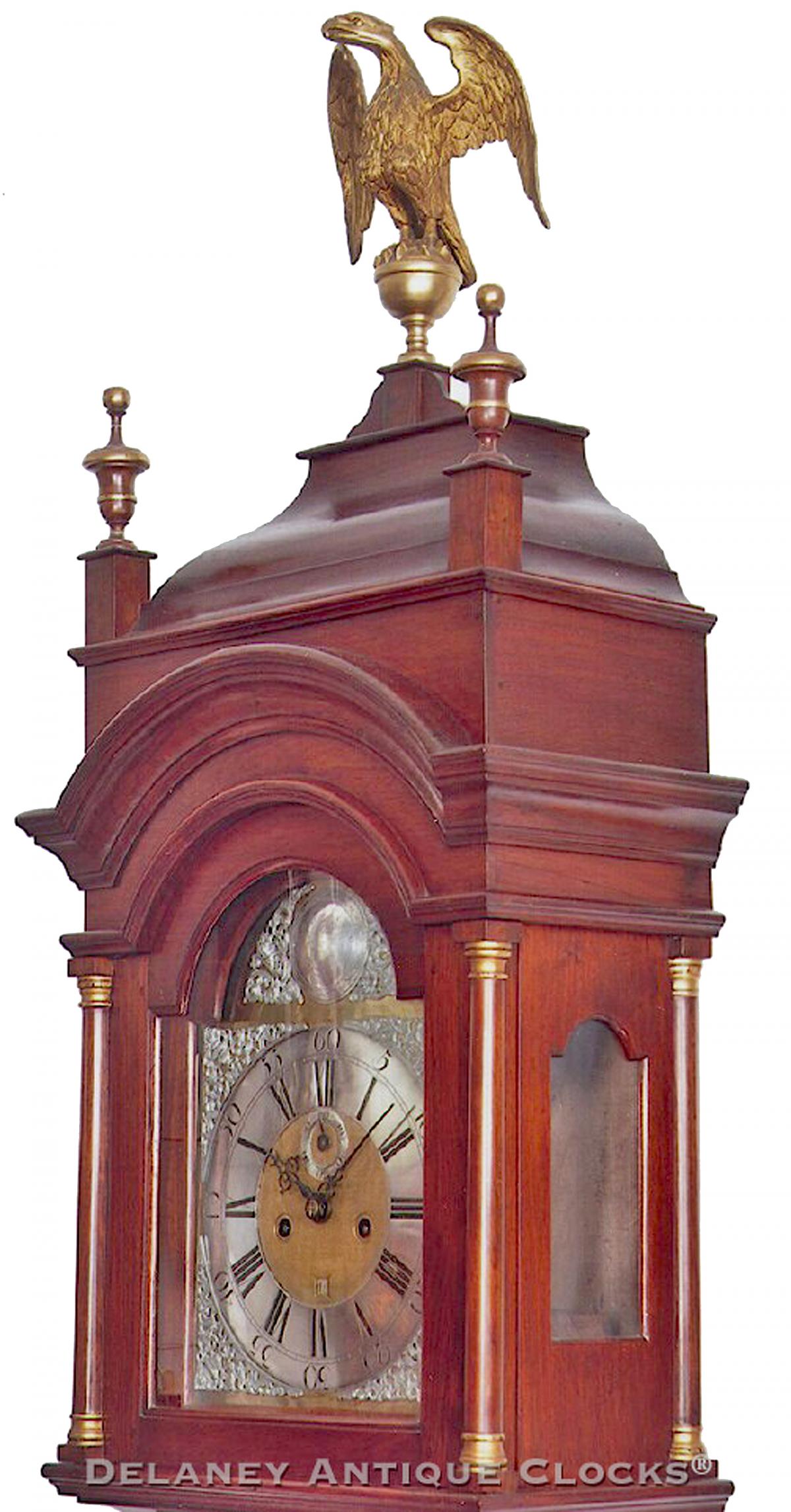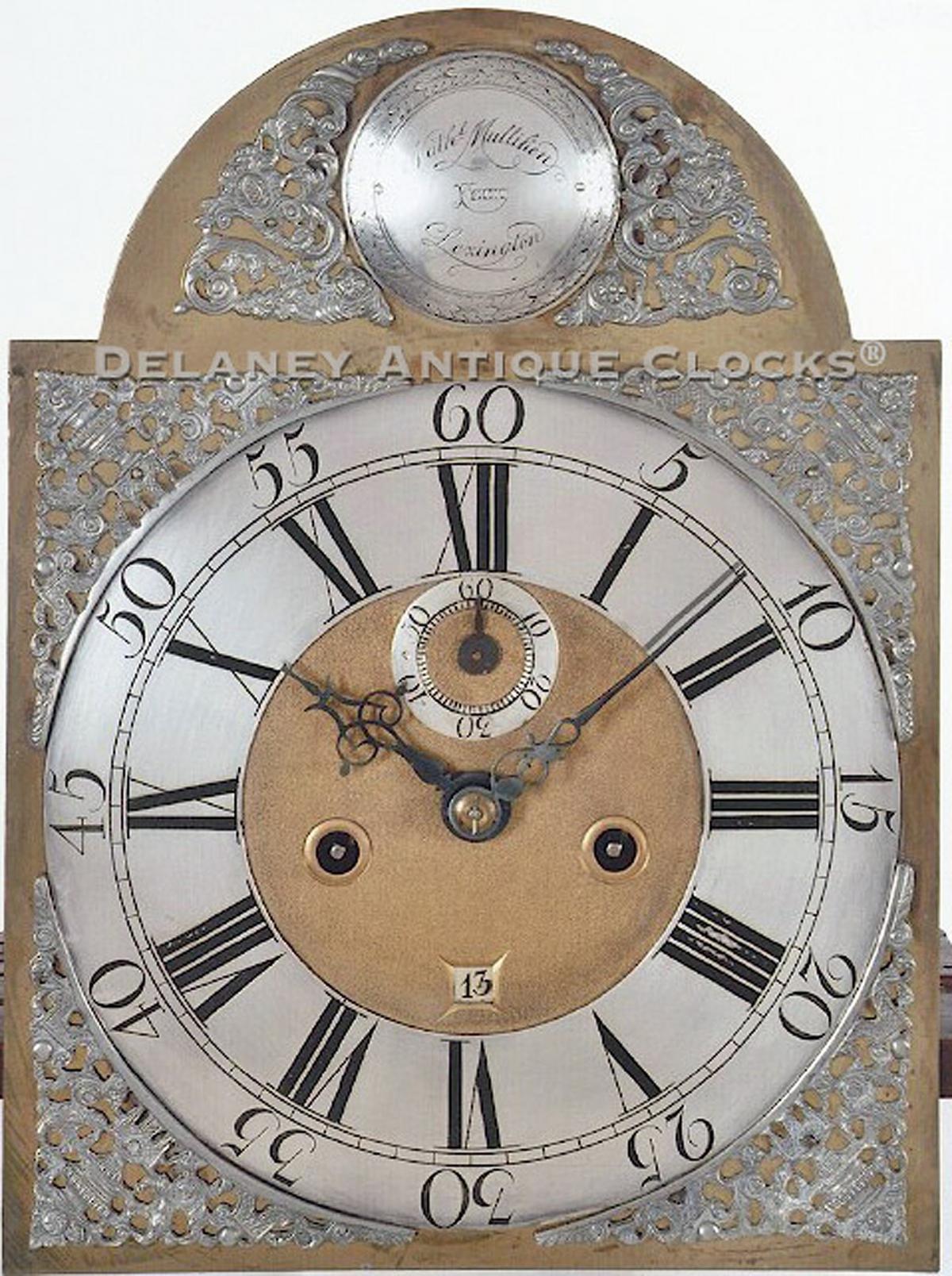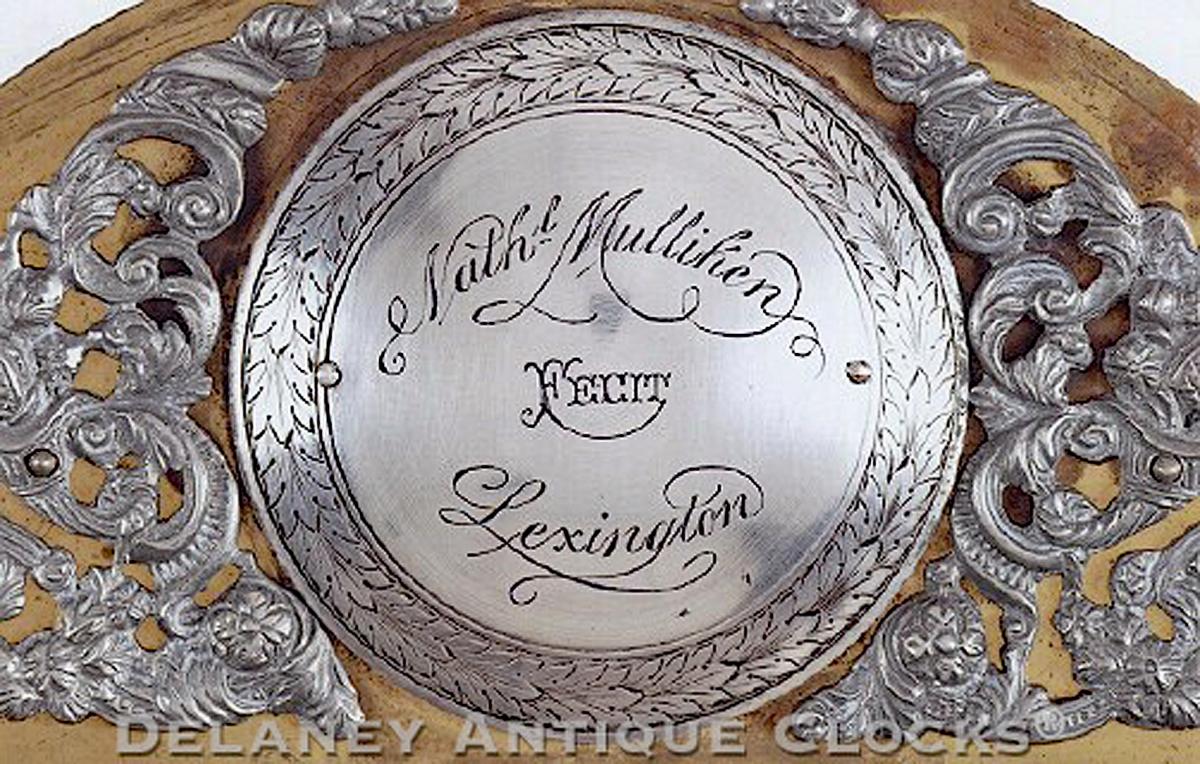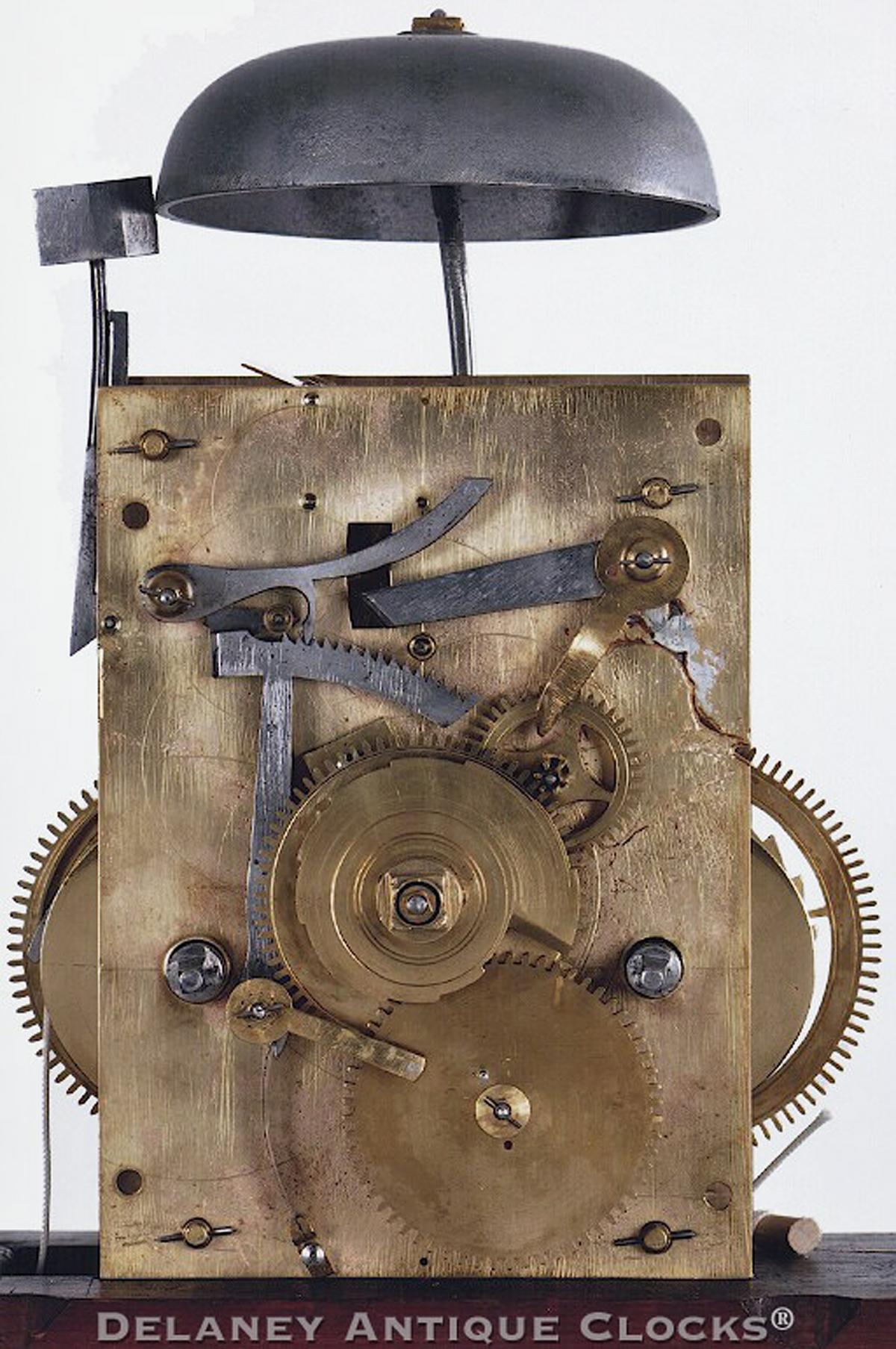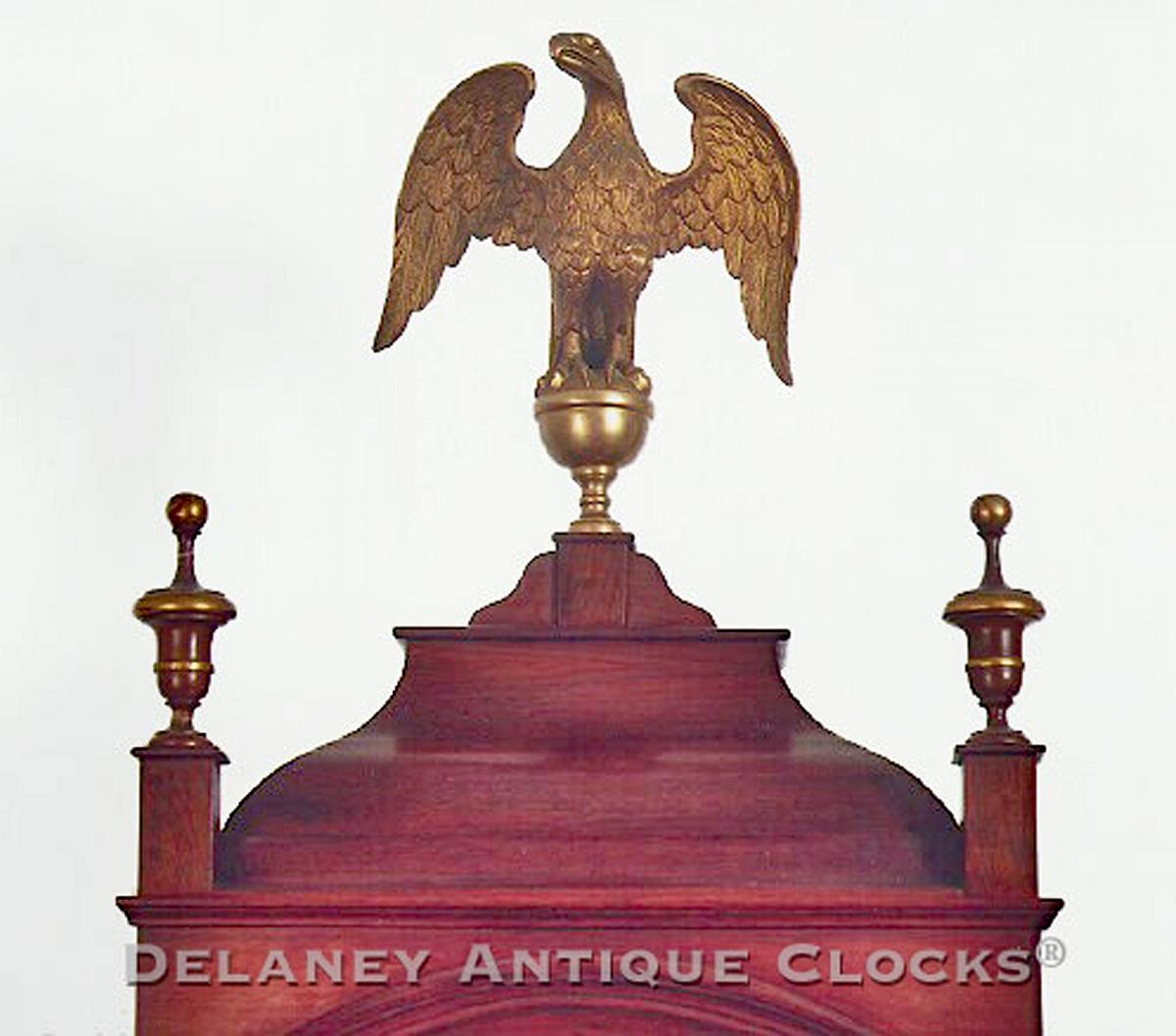Nathaniel Mulliken (1722-1777) Lexington, Massachusetts. A pre-revolutionary American tall case clock. SS-21.
A most important and handsome butternut case tall clock made by Nathaniel Mulliken of Lexington, Massachusetts.
Very few Clockmakers lived and worked in the states during this early time period. Pre-Revolutionary clocks made in this country are quite rare and very few exist. The majority of clocks that would have been available during this early time period would have been from English sources.
This rare clock is typical of the early New England form. It stands up on a large applied bracket base. The feet are cut out from the lower board and are a country form. Interestingly, a drop decoration is centered by the front feet. A large tombstone shaped waist door fills the waist or middle section of the case. This door is fitted with an applied molding around its outer edge. Through this door, one can access the weights and the brass faced pendulum bob which are protected by the case. The double break arch bonnet features a caddy or sargofigus top. This is a very early tall case feature. This version also incorporates three finial plinths into its design. The center finial is a cast eagle form which is perched or positioned on a ball. The two side finials are wood and are gracefully turned. They are decorated with gilt rings. A turned column is fitted to each of the four corners of the hood. The two located at the back are split in half and mounted to the hood sides. The front two examples are three quarter columns and mounted directly to the hood door. All four terminate in turned wooden capitals that are treated with a gilt wash. The bonnet door is arched in form and opens to a composite brass dial that is signed by the Maker.
This style of dial predates the painted dial form. This example is exceptional. It is composed of a brass sheet and is decorated with applied silver spandrels, a solid silver name boss and solid silver time or chapter rings. The four spandrels feature urns . The time layout is a traditional format. Large Roman style numerals mark each of the twelve hours. Arabic numerals are used to mark the five minute markers, the month calendar date and the ten second increments on the seconds ring. The center of the time ring is matted to provide a textured back ground in order to provide contrast for the nicely made steel hands. The name boss is expertly engraved. The Maker's name and working location are recorded in a fluid hand. The border is decorated with a wreath.
The movement is constructed in brass and is weight driven. It is designed to run eight days on a full wind and strike each the hour on a cast iron bell. The cast bell is mounted above the movement which is good quality. The striking system is actuated by a rack and snail. Four turned posts secure the brass plates.
This example stands approximately 102 inches or 8 feet 6 inches tall overall. To the top of the center finial plinth, measured with out a finial in place, this clock is 7 feet 10 inches or 98 inches tall. At the upper hood molding, this case is 20 inches wide and 10 inches deep. This clock was made circa 1755.
This clock is inventory number SS-21.
Nathaniel was a member of a very important family of American clockmakers extending in two family lines for three generations. He was born in Bradford, Massachusetts, on August 8, 1722. His parents were John and Mary (Poore) Mulliken of Bradford, Massachusetts. It is thought that he served his clockmaking apprenticeship to his uncle Jonathan Mulliken (b. circa 1701), who was working in Bradford as early as 1735. Nathaniel also worked in Bradford until approximately 1751, when he married Lydia Stone. She was the daughter of Deacon John Stone of Lexington, who lived near the town line of Lincoln. It is said that Nathaniel left a clock with the Deacon "on trial." When he returned for payment, the courtship began with his daughter. Together, Nathaniel and Lydia bought a small house and shop on the main road now called Massachusetts Avenue. It was located on the rise of ground across the street from the lower entrance of the cemetery and just above the Munroe Tavern. Nathaniel was also a blacksmith and was proud of the andirons he made. They had at least seven children. Two of which also made clocks. Nathaniel Jr. was born on March 30, 1752, and Joseph was born on April 9, 1765, in the same town. Nathaniel lived and worked in Lexington until his death in 1767. It is thought that he trained other clockmakers besides his sons, including Benjamin Willard. Willard moved to Lexington to learn how to make brass works clocks. He is also thought to have trained Daniel Balch of Newbury, Massachusetts. Nathaniel's son John (born 1754) was a cabinetmaker and is recorded as making clock cases. Nathaniel Sr died on Monday, December 3, 1767. He fell at the door of his house and expired a few moments later. Nathaniel Jr. and Benjamin Willard continued the business in Lexington. Nathaniel II maintained this business until the shop, and the house were burned to the ground on April 19, 1775, by British troops while returning to Boston from Concord. A signed Mulliken musical movement designed to play lively tunes during the week and a Psalm tune on Sunday was reportedly found in the knapsack of a wounded British soldier lying on the Boston Road in Malden or Medford. Nathaniel Jr. died the next winter at the age of 24.
Several tall-case clocks with movements by Nathaniel Mulliken are known. One eight-day example of having a dial engraved with an American eagle is illustrated in Lester Dworetsky and Robert Dickstein, Horology Americana, 1972, on page 2. Brooks Palmer also documents this in The Book of American Clocks, 1950, p. 246. a Mulliken clock from the collection of J. Cheney Wells with a brass dial and maple case that was exhibited at the Harvard Tercentenary. This clock is now on display at Old Sturbridge Village. Another is illustrated in "Living with Antiques: The Brick House, New Hampshire of Mrs. Thomas C. Dunnington," The Magazine Antiques (July 1964) page 75. Another example is in the collection of the Concord Antiquarian Society, which is illustrated in The Magazine Antiques (December 1974).


